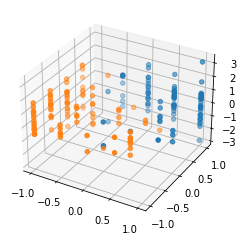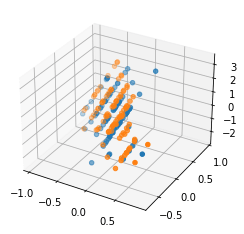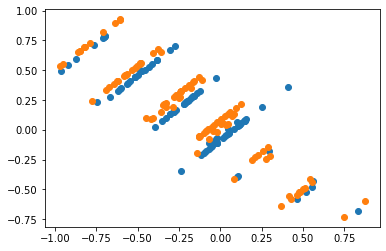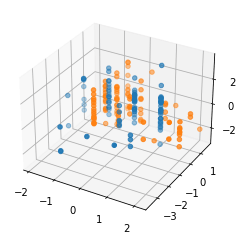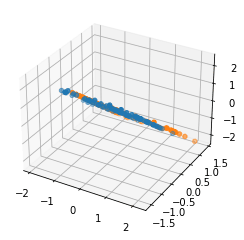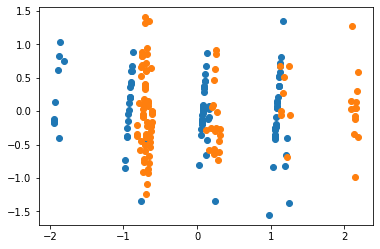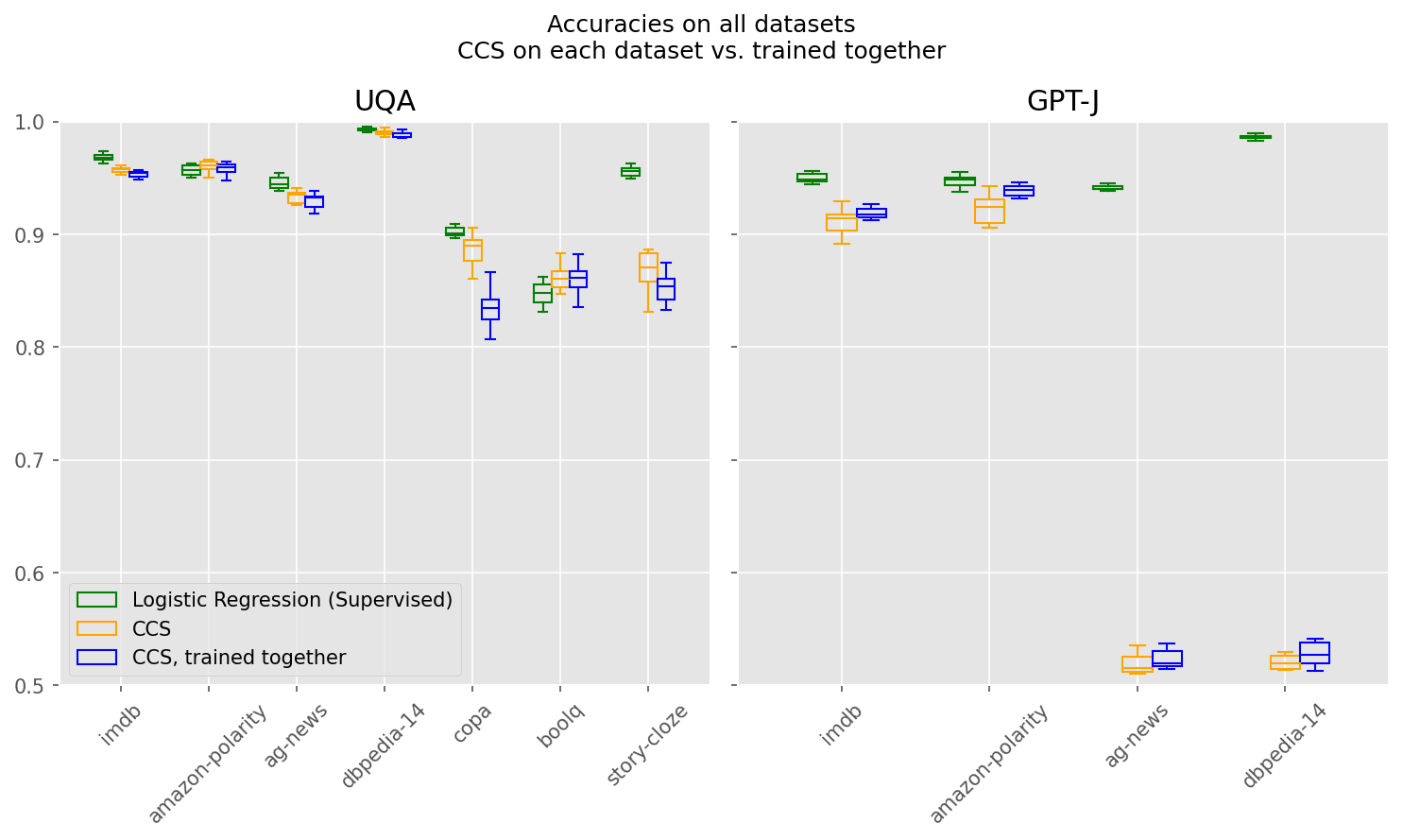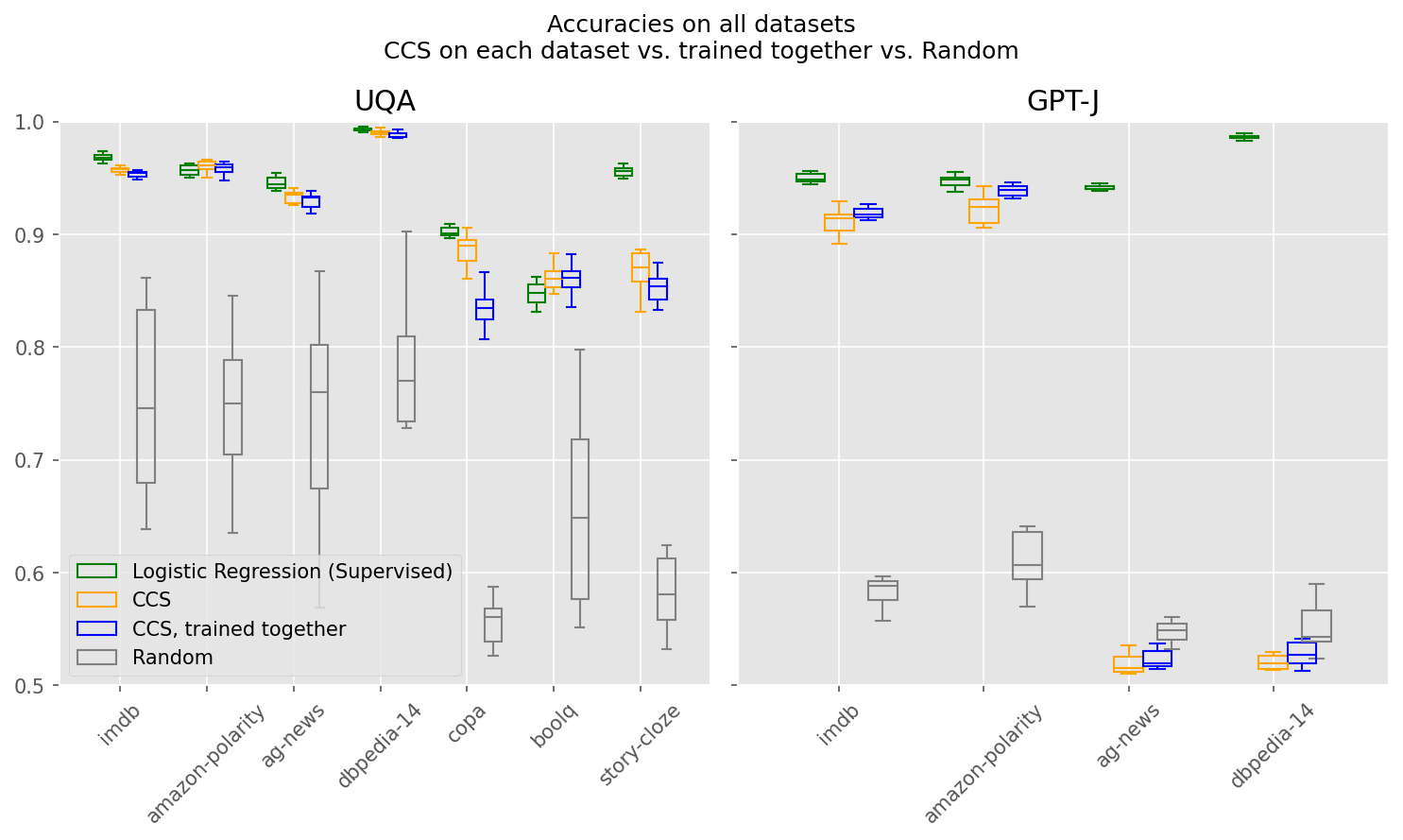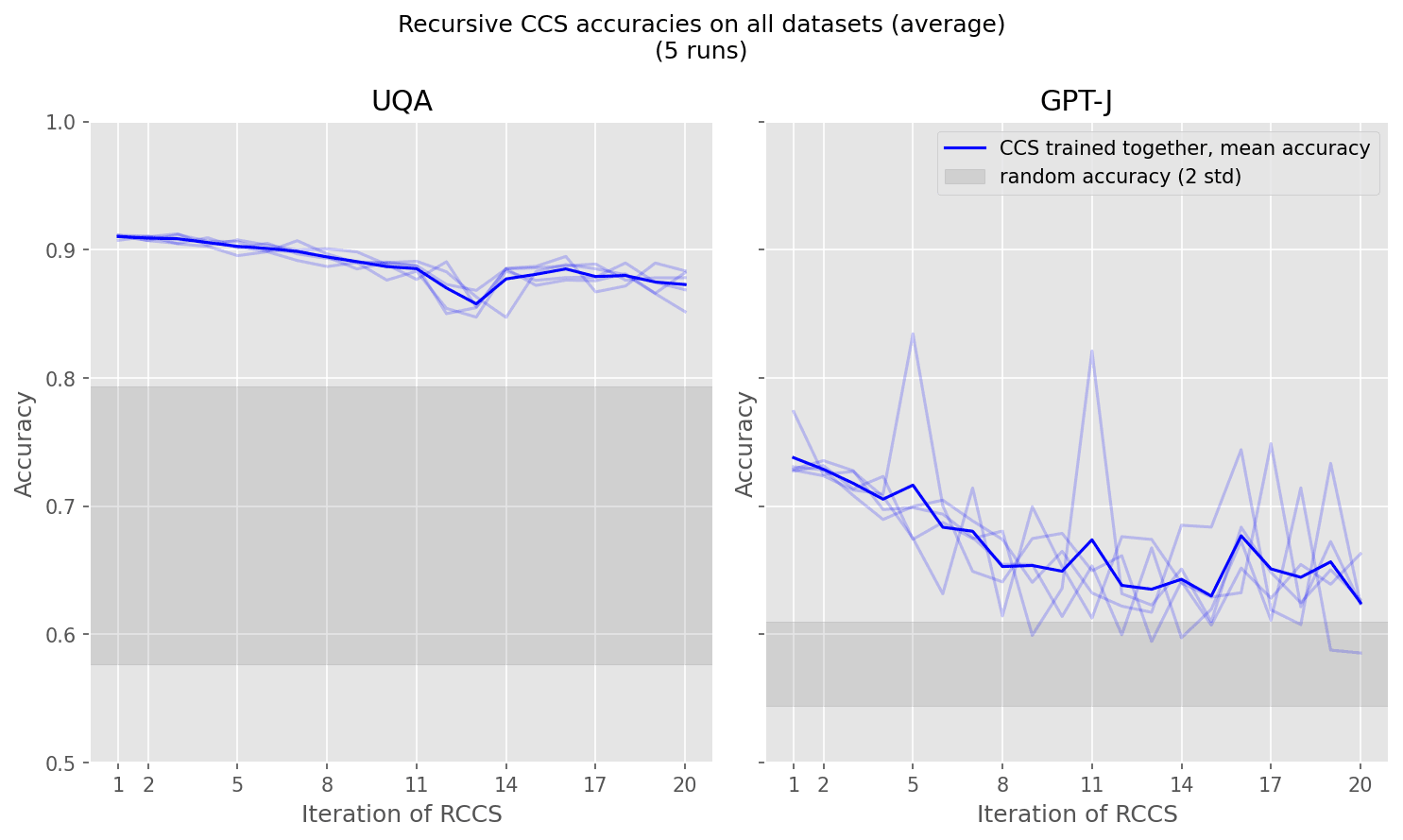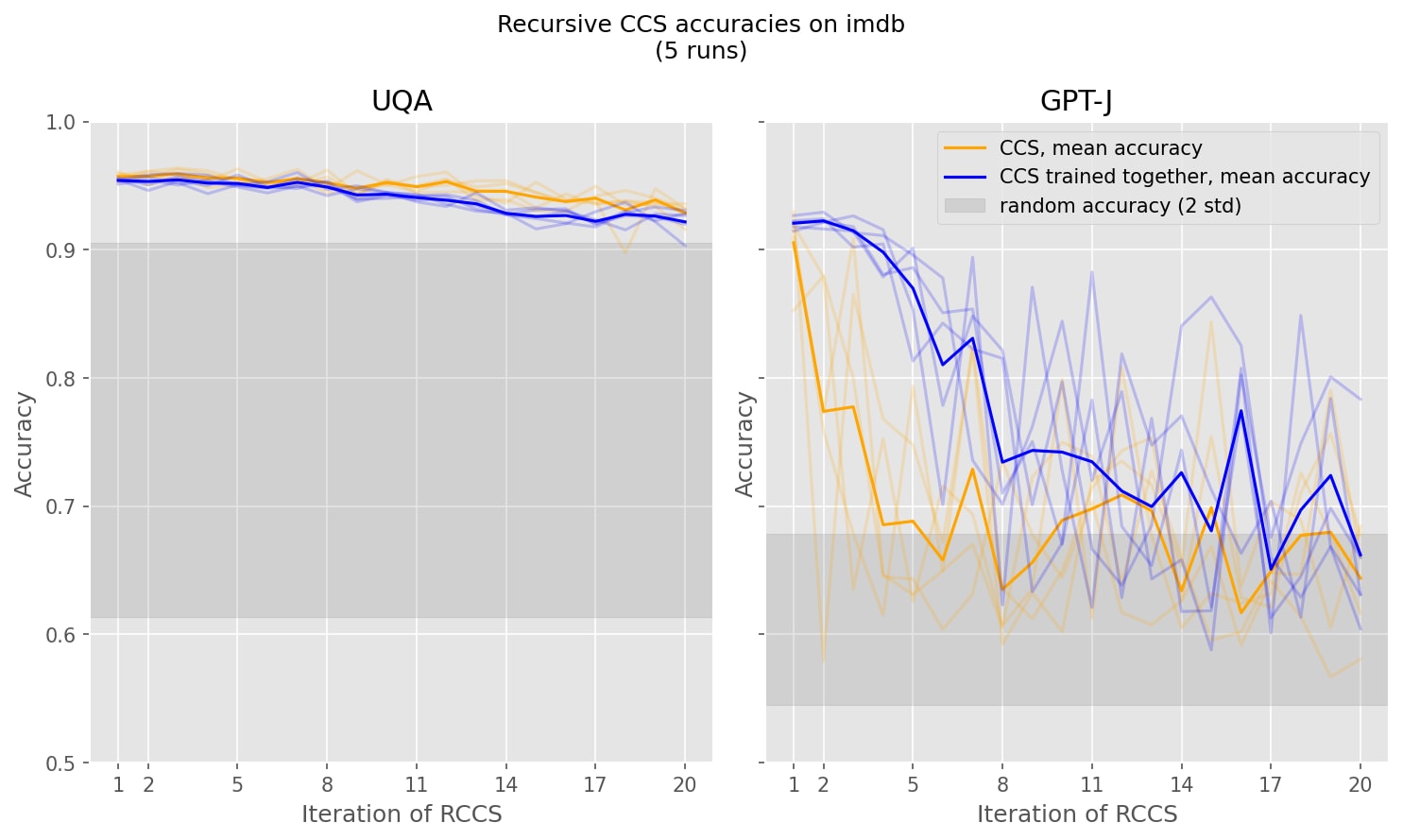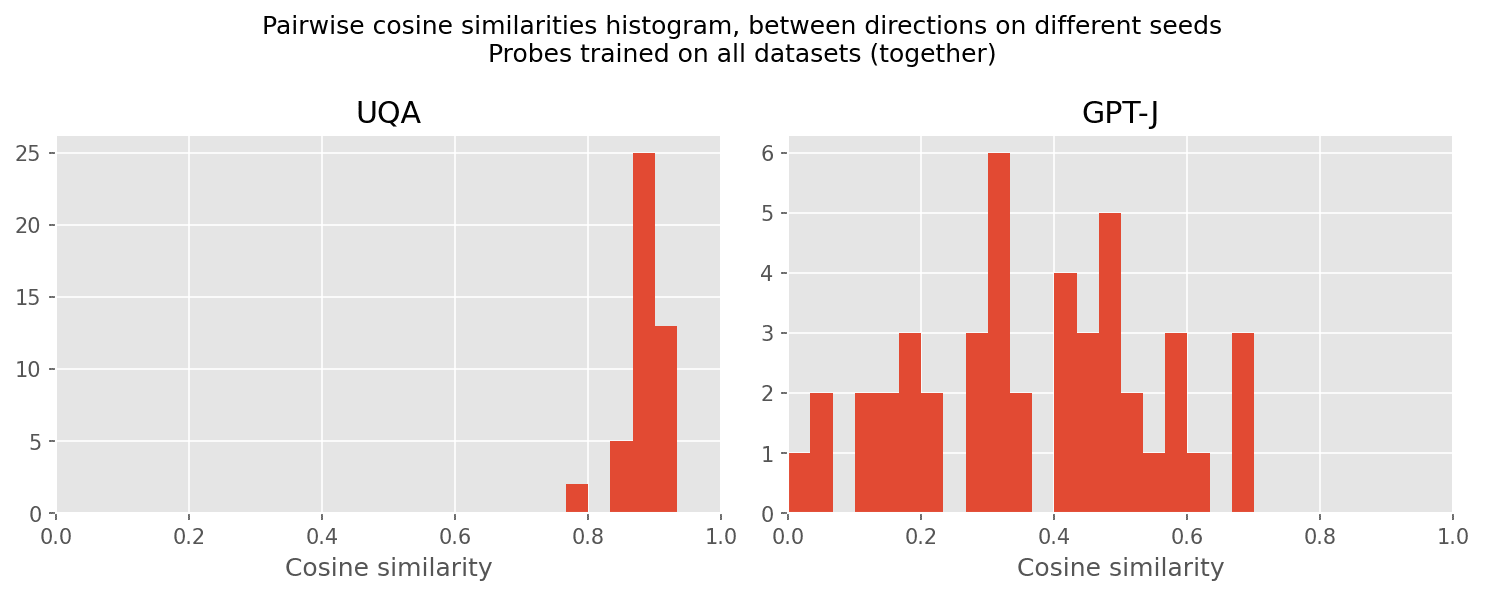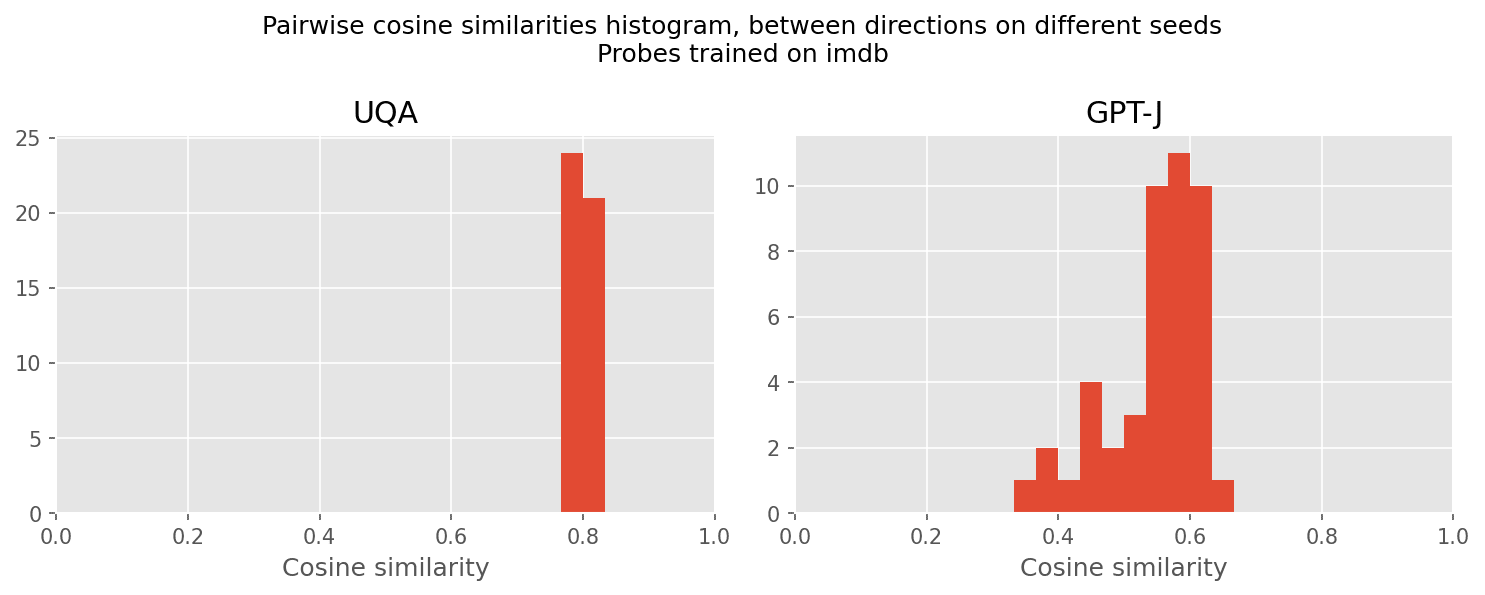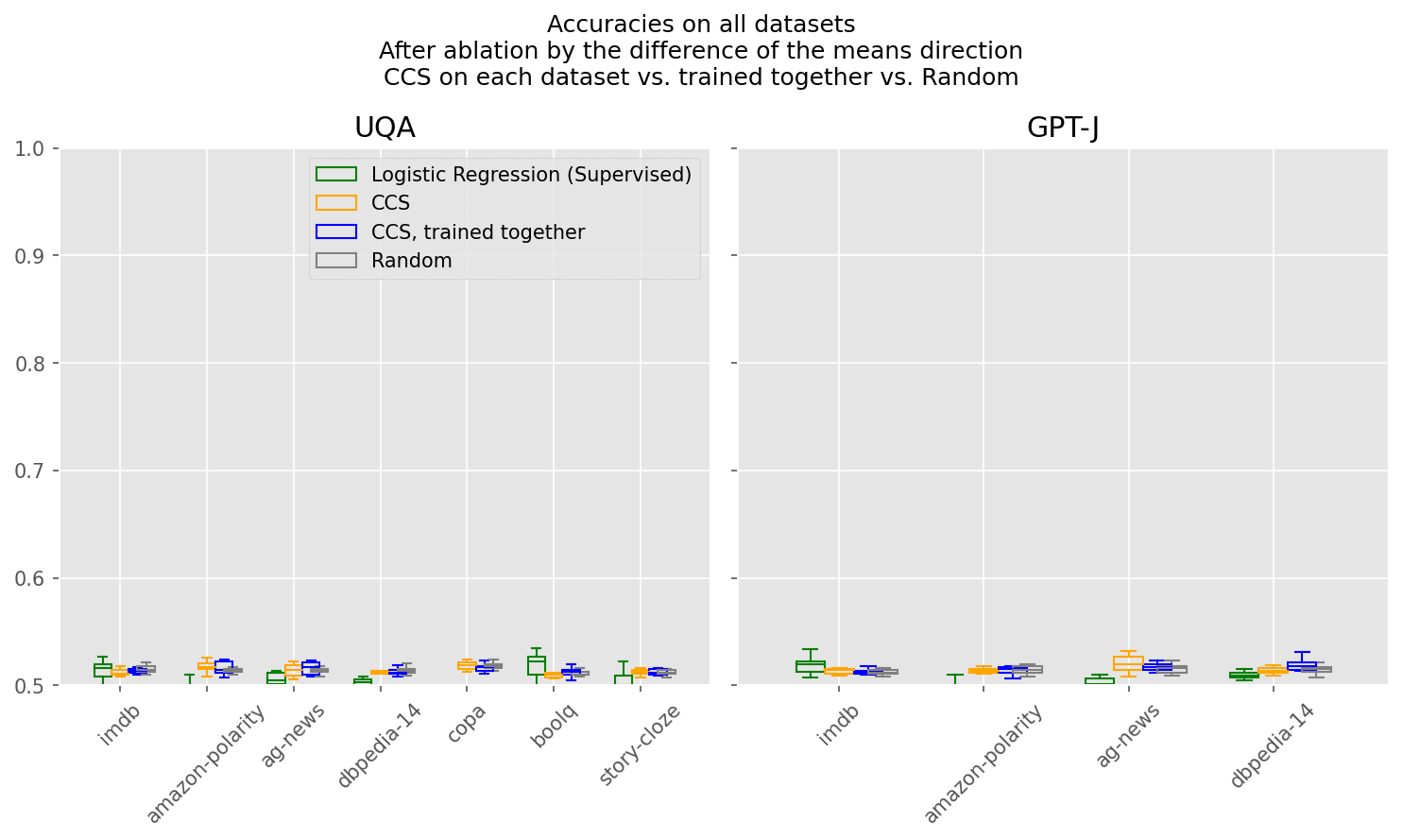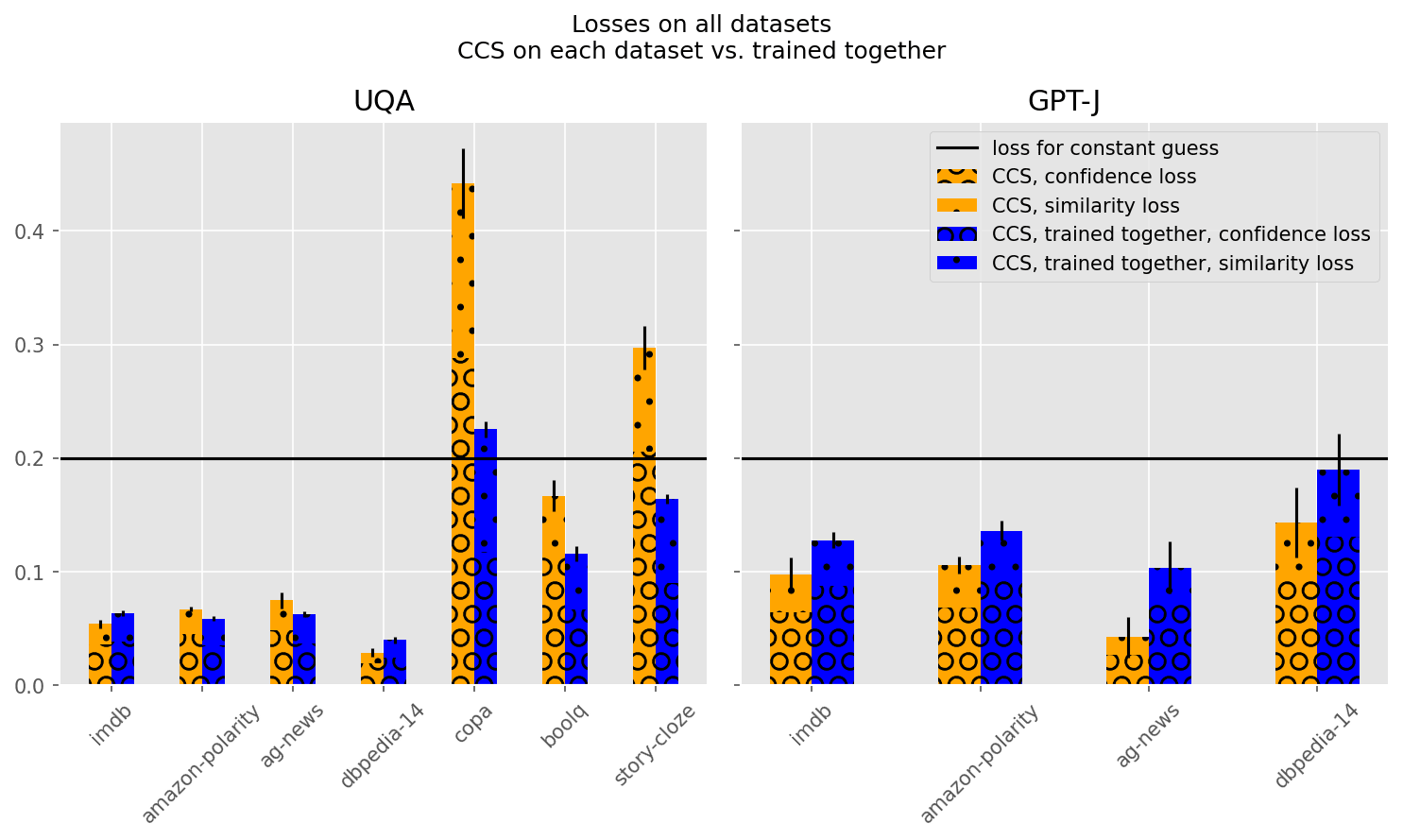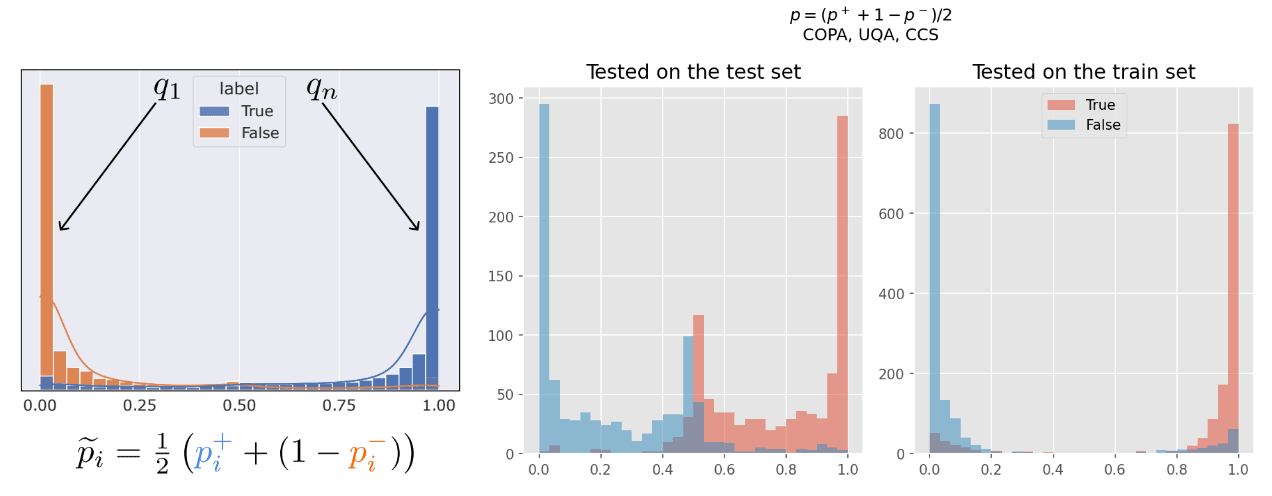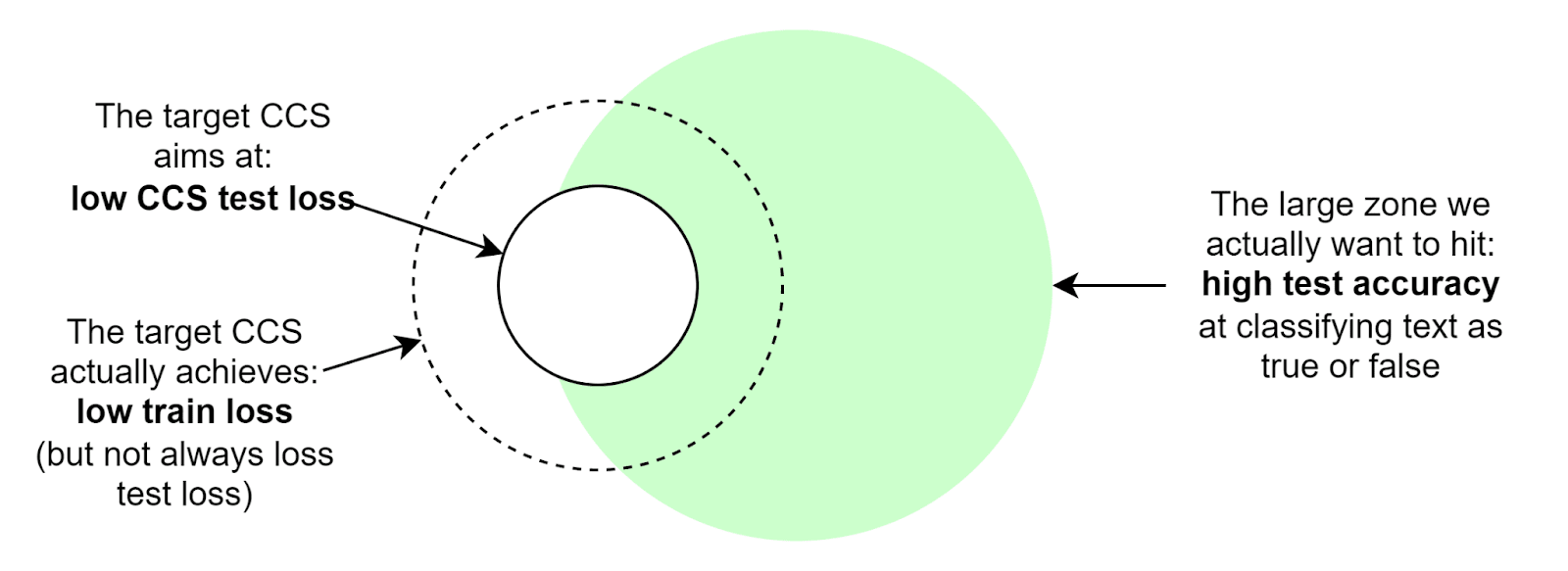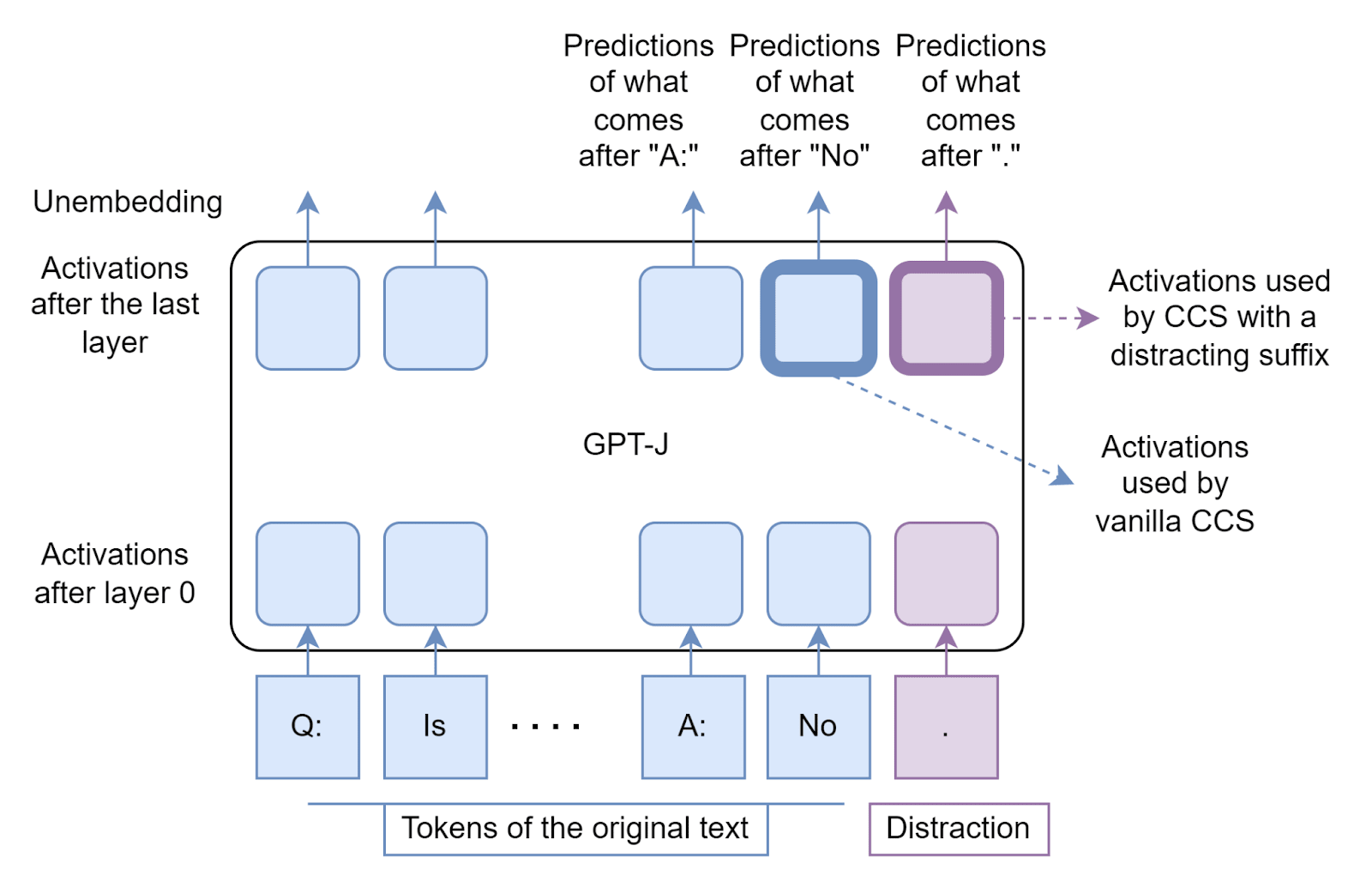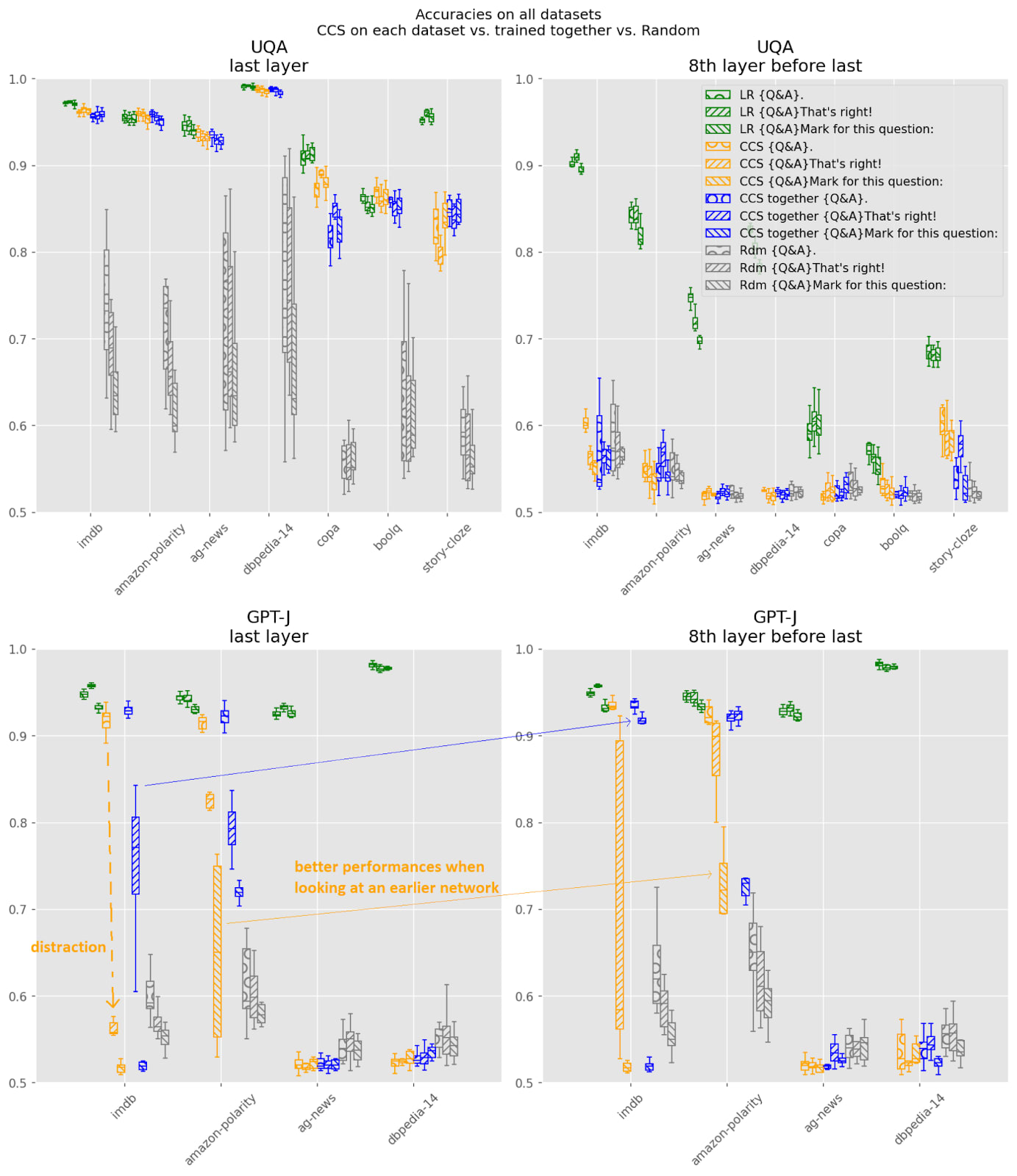What Discovering Latent Knowledge Did and Did Not Find
20Collin
1wassname
3AlexMennen
1Fabien Roger
3AlexMennen
1Fabien Roger
3AlexMennen
3Caridorc Tergilti
3Fabien Roger
3Seb Farquhar
2David Scott Krueger (formerly: capybaralet)
3Fabien Roger
1Review Bot
1Seb Farquhar
1Fabien Roger
1Matthew Nour
2Fabien Roger
New Comment
Thanks for running these experiments and writing this up! I’m very excited to see this sort of followup work, and I think there are a lot of useful results here. I agree with most of this, and mostly just have a few nitpicks about how you interpret some things.
Reactions to the summary of your experimental results:
- CCS does so better than random, but not by a huge margin: on average, random linear probes have a 75% accuracy on some “easy” datasets;
- I think it’s cool that random directions sometimes do so well; this provides a bit of additional evidence that high-accuracy directions can be quite salient.
- It’s not too surprising to me that this holds for UQA (which is instruction-tuned, so it should intuitively have a particularly salient truth-y direction) and the easiest datasets like IMDB, but I doubt this holds for most models and datasets. At the very least I recall looking at this in one narrow setting before and got close to random performance (though I don’t remember what setting that was exactly). I’d be curious to see this for more model/dataset pairs.
- This is more of a nitpick with your phrasing, but FWIW based on the plot it does still look to me like CCS is better by a large margin (e.g. 75% accuracy to 95% accuracy is a 5x reduction in error) even in the settings where random directions do best. The takeaway for me here is mostly just that random direction can sometimes be surprisingly good -- which I agree is interesting.
- CCS does not find the single linear probe with high accuracy: there are more than 20 orthogonal linear probes (i.e. using completely different information) that have similar accuracies as the linear probe found by CCS (for most datasets);
- Yep, I agree; we definitely weren’t claiming to find a uniquely good direction. I also quite like the recursive CCS experiment, and would love to see more experiments along these lines.
- I think it’s interesting that you can find 20 orthogonal probes each with high accuracy. But I’m especially interested in how many functionally equivalent directions there are. For example, if this 20 dimensional subspace actually corresponds to roughly the same clustering into true and false, then I would say they are ~equivalent for my purposes.
- CCS does not always find a probe with low test CCS loss (Figure 1 of the paper is misleading). CSS finds probes which are sometimes overconfident in inconsistent predictions on the test set, resulting in a test loss that is sometimes higher than always predicting a constant probability;
- We indeed forgot to specify that figure 1 is with the train set — that was a good catch that we’ll specify in the arxiv version soon (we’ve already done so for the camera ready version).
- I think some of your experiments here are also interesting and helpful. That said, I do want to emphasize that I don’t find train-test distinctions particularly essential here because our method is unsupervised; I ultimately just want to find a direction that gives correct predictions to superhuman examples, and we can always provide those superhuman examples as part of the training data.
- Another way of putting this is that I view our method as being an unsupervised clustering method, for which I mostly just care about finding high-accuracy clusters. We also show it generalizes/transfers, but IMO that’s of secondary importance.
- I also think it's interesting to look at loss rather than just accuracy (which we didn't do much), but I do ultimately think accuracy is quite a bit more important overall.
- CCS’ performance on GPT-J heavily depends on the last tokens of the input, especially when looking at the last layers’ activations (the setting used in the paper).
- Thanks, these are helpful results. The experiment showing that intermediate layers can be better in some ways also feel similar to our finding that intermediate layers do better than later layers when using a misleading prompt. In general I would indeed like to see more work trying to figure out what’s going on with autoregressive models like GPT-J.
Reactions to your main takeaways:
- However, we still don’t know if this feature corresponds to the model’s “beliefs”.
- I agree. (I also still doubt current models have “beliefs” in any deep sense)
- Future work should compare their work against the random probe baseline. Comparing to a 50% random guessing baseline is misleading, as random probes have higher accuracy than that.
- I agree, this seems like a good point.
- CCS will likely miss important information about the model’s beliefs because there is more than one linear probe which achieves low loss and high CCS accuracy, i.e. there is more than one truth-like feature… There are many orthogonal linear probes which achieve low loss and high CCS accuracy, i.e. there are many truth-like features. Narrowing down which linear probe corresponds to the model’s beliefs might be hard.
- I think your experiments here are quite interesting, but I still don’t think they show that there are many functionally different truth-like features, which is what I mostly care about. This is also why I don’t think this provides much evidence that “Narrowing down which linear probe corresponds to the model’s beliefs might be hard.” (If you have two well-separated clusters in high dimensional space, I would expect there to be a large space of separating hyperplanes — this is my current best guess for what’s going on with your results.)
- There exists a direction which contains all linearly available information about truth, i.e. you can’t train a linear classifier to classify true from untrue texts after projecting the activations along this direction. CCS doesn’t find it. This means CCS is ill-suited for ablation-related experiments.
- I definitely agree that vanilla CCS is ill-suited for ablation-related experiments; I think even supervised linear probes are probably not what we want for ablation-related experiments, and CCS is clearly worse than logistic regression.
- I like this experiment. This suggests to me that there really is just functionally one truth-like feature/direction. I agree your results imply that vanilla CCS is not finding this direction geometrically, but your results make me more optimistic we can actually find this direction using CCS and maybe just a little bit more work. For example, I’d be curious to see what happens if you first get predictions from CCS, then use those predictions to get two clusters, then take the difference in means between those induced clusters. Do you get a better direction?
- More generally I'm still interested in whether this has meaningfully different predictions from what CCS finds or not.
- Future work should use more data or more regularization than the original paper did if it wants to find features which are actually truth-like.
- This seems like a useful finding!
- To get clean results, use CCS on UQA, and don’t get too close to GPT models. Investigating when and why CCS sometimes fails with GPT models could be a promising research direction.
- I basically agree, though I would suggest studying non-instruction tuned encoder or encoder-decoder models like T5 or (vanilla) DeBERTa as well, since instruction tuning might affect things.
- When using CCS on GPT models, don’t use CCS only on the last layer, as probes trained on activations earlier in the network are less sensitive to the format of the input.
- This also seems like an interesting finding, thanks!
I don’t find train-test distinctions particularly essential here because our method is unsupervised
If I recall correctly, most unsupervised learning papers do have a test set. Perhaps the fact that the train and test are different kind of shows why you need a test set in the first place.
Ablating along the difference of the means makes both CCS & Supervised learning fail, i.e. reduce their accuracy to random guessing. Therefore:
- The fact that Recursive CCS finds many good direction is not due to some “intrinsic redundancy” of the data. There exist a single direction which contains all linearly available information.
- The fact that Recursive CCS finds strictly more than one good direction means that CCS is not efficient at locating all information related to truth: it is not able to find a direction which contains as much information as the direction found by taking the difference of the means. Note: Logistic Regression seems to be about as leaky as CCS. See INLP which is like Recursive CCS, but with Logistic Regression.
I don't think that's a fair characterization of what you found. Suppose, for example, that you're given a vector in whose th component is , where is a random variable with high variance, and are i.i.d. with mean and tiny variance. There is a direction which contains all the information about contained in the vector, namely the average of the coordinates. Subtracting out the mean of the coordinates from each coordinate will remove all information about . But the data is plenty redundant; there are orthogonal directions each of which contain almost all of the available information about , so a probe trained to recover that learns to just copy one of the coordinates will be pretty efficient at recovering . If the have variance (i.e. are just constants always equal to ), then there are orthogonal directions each of which contain all information about , and a probe that copies one of them is perfectly efficient at extracting all information about .
If you can find multiple orthogonal linear probes that each get good performance at recovering some feature, then something like this must be happening.
"Redundancy" depends on your definition, and I agree that I didn't choose a generous one.
Here is an even simpler example than yours: positive points are all at (1...1) and negative points are all at (-1...-1). Then all canonical directions are good classifiers. This is "high correlation redundancy" with the definition you want to use. There is high correlation redundancy in our toy examples and in actual datasets.
What I wanted to argue against is the naive view that you might have which could be "there is no hope of finding a direction which encodes all information because of redundancy", which I would call "high ablation redundancy". It's not the case that there is high ablation redundancy in both our toy examples (in mine, all information is along (1...1)), and in actual datasets.
What you're calling ablation redundancy is a measure of nonlinearity of the feature being measured, not any form of redundancy, and the view you quote doesn't make sense as stated, as nonlinearity, rather than redundancy, would be necessary for its conclusion. If you're trying to recover some feature , and there's any vector and scalar such that for all data (regardless of whether there are multiple such , which would happen if the data is contained in a proper affine subspace), then there is a direction such that projection along it makes it impossible for a linear probe to get any information about the value of . That direction is , where is the covariance matrix of the data. This works because if , then the random variables and are uncorrelated (since ), and thus is uncorrelated with .
If the data is normally distributed, then we can make this stronger. If there's a vector and a function such that (for example, if you're using a linear probe to get a binary classifier, where it classifies things based on whether the value of a linear function is above some threshhold), then projecting along removes all information about . This is because uncorrelated linear features of a multivariate normal distribution are independent, so if , then is independent of , and thus also of . So the reason what you're calling high ablation redundancy is rare is that low ablation redundancy is a consequence of the existence of any linear probe that gets good performance and the data not being too wildly non-Gaussian.
Yep, high ablation redundancy can only exist when features are nonlinear. Linear features are obviously removable with a rank-1 ablation, and you get them by running CCS/Logistic Regression/whatever. But I don't care about linear features since it's not what I care about since it's not the shape the features have (Logistic Regression & CCS can't remove the linear information).
The point is, the reason why CCS fails to remove linearly available information is not because the data "is too hard". Rather, it's because the feature is non-linear in a regular way, which makes CCS and Logistic Regression suck at finding the direction which contains all linearly available data (which exists in the context of "truth", just as it is in the context of gender and all the datasets on which RLACE has been tried).
I'm not sure why you don't like calling this "redundancy". A meaning of redundant is "able to be omitted without loss of meaning or function" (Lexico). So ablation redundancy is the normal kind of redundancy, where you can remove sth without losing the meaning. Here it's not redundant, you can remove a single direction and lose all the (linear) "meaning".
I'm not sure why you don't like calling this "redundancy". A meaning of redundant is "able to be omitted without loss of meaning or function" (Lexico). So ablation redundancy is the normal kind of redundancy, where you can remove sth without losing the meaning. Here it's not redundant, you can remove a single direction and lose all the (linear) "meaning".
Suppose your datapoints are (where the coordinates and are independent from the standard normal distribution), and the feature you're trying to measure is . A rank-1 linear probe will retain some information about the feature. Say your linear probe finds the coordinate. This gives you information about ; your expected value for this feature is now , an improvement over its a priori expected value of . If you ablate along this direction, all you're left with is the coordinate, which tells you exactly as much about the feature as the coordinate does, so this rank-1 ablation causes no loss in performance. But information is still lost when you lose the coordinate, namely the contribution of from the feature. The thing that you can still find after ablating away the direction is not redundant with the the rank-1 linear probe in the direction you started with, but just contributes the same amount towards the feature you're measuring.
The point is, the reason why CCS fails to remove linearly available information is not because the data "is too hard". Rather, it's because the feature is non-linear in a regular way, which makes CCS and Logistic Regression suck at finding the direction which contains all linearly available data (which exists in the context of "truth", just as it is in the context of gender and all the datasets on which RLACE has been tried).
Disagree. The reason CCS doesn't remove information is neither of those, but instead just that that's not what it's trained to do. It doesn't fail, but rather never makes any attempt. If you're trying to train a function such that and , then will achieve optimal loss just like will.
- CCS does not find the single linear probe with high accuracy: there are more than 20 orthogonal linear probes (i.e. using completely different information) that have similar accuracies as the linear probe found by CCS (for most datasets);
So what about an ensamble of the top 20 linear probes? Is it substantially better than using just the best one alone? I would expect so given that they are orthogonal, so they are using ~uncorrelated information.
I think that a (linear) ensemble of linear probes (trained with Logistic Regression) should never be better than a single linear probe (otherwise the optimizer would have just found this combined linear probe instead). Therefore, I don't expect that ensembling 20 linear CCS probe will increase performance much (and especially not beyond the performance of supervised linear regression).
Feel free to run the experiment if you're interested about it!
Probes initialized like Collin does in the zip file: a random spherical initialization (take a random Gaussian, and normalize it).
The LessWrong Review runs every year to select the posts that have most stood the test of time. This post is not yet eligible for review, but will be at the end of 2024. The top fifty or so posts are featured prominently on the site throughout the year.
Hopefully, the review is better than karma at judging enduring value. If we have accurate prediction markets on the review results, maybe we can have better incentives on LessWrong today. Will this post make the top fifty?
Thanks a lot for this post, I found it very helpful.
There exists a single direction which contains all linearly available information Previous work has found that, in most datasets, linearly available information can be removed with a single rank-one ablation by ablating along the difference of the means of the two classes.
The specific thing that you measure may be more a fact about linear algebra rather than a fact about LLMs or CCS.
For example, let's construct data which definitely has two linearly independent dimension that are each predictive of whether a point is positive or negative. I'm assuming here that positive/negative exactly corresponds to true/false for convenience (i.e., that all the original statements happened to be true), but I don't think it should matter to the argument.
# Initialize the dataset
p = np.random.normal(size=size)
n = np.random.normal(size=size)
# In the first and second dimensions, they can take values -1, -.5, 0, .5, 1
# The distributions are idiosyncratic for each, but all are predictive of the truth
# label
standard = [-1, -.5, 0, .5, 1]
p[:,0] = np.random.choice(standard, size=(100,), replace=True, p=[0, .1, .2, .3, .4])
n[:,0] = np.random.choice(standard, size=(100,), replace=True, p=[.6, .2, .1, .1, .0])
p[:,1] = np.random.choice(standard, size=(100,), replace=True, p=[0, .05, .05, .1, .8])
n[:,1] = np.random.choice(standard, size=(100,), replace=True, p=[.3, .3, .3, .1, .0])
Then we can plot the data. For the unprojected data plotted in 3-d, the points are linearly classifiable with reasonable accuracy in both those dimensions.
But then we perform the mean projection operation given here (in case I have any bugs!)
def project(p, n):
# compute the means in each dim
p_mean = np.mean(p, axis=0)
n_mean = np.mean(n, axis=0)
# find the direction
delta = p_mean - n_mean
norm = np.linalg.norm(delta, axis=0)
unit_delta = delta / norm
# project
p_proj = p - np.expand_dims(np.inner(p, unit_delta),1) * unit_delta
n_proj = n - np.expand_dims(np.inner(n, unit_delta),1) * unit_delta
return p_proj, n_proj
And after projection there is no way to get a linear classifier that has decent accuracy.
Or looking at the projection onto the 2-d plane to make things easier to see:
Note also that this is all with unnormalized raw data, doing the same thing with normalized data gives a very similar result with this as the unprojected:
and these projected figures:
FWIW, I'm like 80% sure that Alex Mennen's comment gives mathematical intuition behind these visualizations, but it wasn't totally clear to me, so posting these in case it is clearer to some others as well.
I agree, there's nothing specific to neural network activations here. In particular, the visual intuition that if you translate the two datasets until they have the same mean (which is weaker than mean ablation), you will have a hard time finding a good linear classifier, doesn't rely on the shape of the data.
But it's not trivial or generally true either: the paper I linked to give some counterexamples of datasets where mean ablation doesn't prevent you from building a classifier with >50% accuracy. The rough idea is that the mean is weak to outliers, but outliers don't matter if you want to produce high-accuracy classifiers. Therefore, what you want is something like the median.
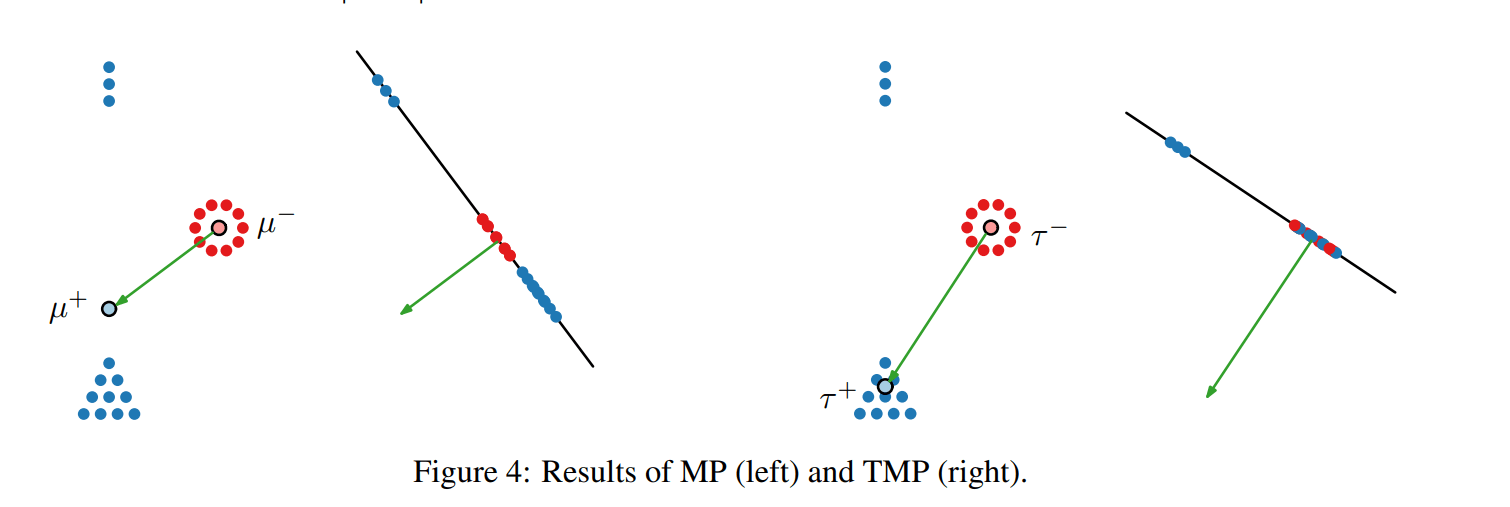
The fact that Recursive CCS finds strictly more than one good direction means that CCS is not efficient at locating all information related to truth: it is not able to find a direction which contains as much information as the direction found by taking the difference of the means. Note: Logistic Regression seems to be about as leaky as CCS.
Perhaps a naive question, but if a single linear projection exists that contains the desired information, why isn't this 'global minimum' found with LR (or CSS)?
That's because a classifier only needs to find a direction which correctly classifies the data, not a direction which makes other classifiers fail. A direction which removes all linearly available information is not always as good as the direction found with LR (at classification).
Maybe figure 2 from the paper which introduced mean difference as a way to remove linear information might help.
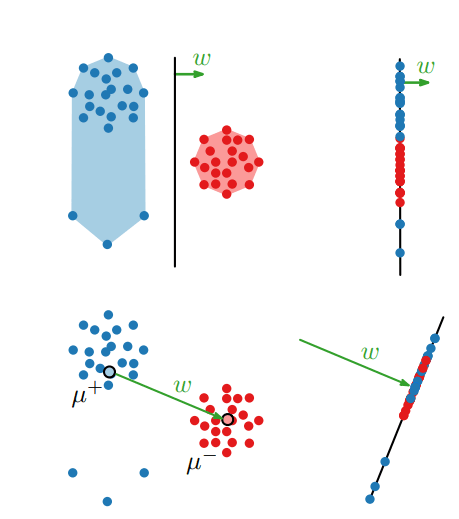
Curated and popular this week
